
Hyundai Sonata and Veloster owners have had some level of remote access for a year now, but the latest version of the Blue Link app does even more. Along with remote start, door lock / unlock and control of the horn and lights, you can now run vehicle diagnostics, send POIs across from your phone for later in-dash navigation, and even locate and manage multiple Blue Link-equipped cars. Sound complicated? Not if you run a cab firm, or if you check out the twelve new instructional videos on Hyundai's YouTube channel below.
HYUNDAI LAUNCHES ALL-NEW BLUE LINK® MOBILE APPLICATION - INDUSTRY LEADING FEATURES AND UNMATCHED FUNCTIONALITY
Blue Link® Mobile Application Offers Refreshed User Interface and New Features
COSTA MESA, May 15, 2012 /PRNewswire/ - Hyundai Motor America this week introduced an all-new mobile application for the Hyundai-developed Blue Link® telematics platform. The mobile app allows subscribers to remotely access various Blue Link® features and services through compatible mobile devices. Completely redesigned from the ground up, the app has been significantly enhanced from the previous version and boasts a new user experience, faster navigation and innovative new features. Google Android and Apple iOS users can download the app today from Google Play or Apple iTunes, respectively. A Blackberry version is also in development.
Blue Link® Mobile App Highlights
- Completely redesigned interface and navigation
- Swipe gestures allow quick access to core features
- Remotely access many Blue Link® features found on MyHyundai.com
- Manage multiple Blue Link-enrolled vehicles
- Remotely control vehicle functions: Door lock/unlock, horn & lights, lights-only and remote vehicle start (not available on all models)
- Search, save and send POIs to vehicles for in-car navigation
- Innovative new features: car finder, parking meter/timer and vehicle diagnostics
- Remotely manage Blue Link alerts and notifications
Blue Link is an innovative telematics solution from Hyundai that combines safety, service and infotainment into a complete package. Blue Link is powered by Agero's next-generation telematics platform, which offers a flexible architecture that supports multi-modal interfaces for vehicle owners. "This improved app demonstrates one of Agero's core capabilities: developing customized user experience interfaces, from end to end, on behalf of our automotive OEM clients," said Tom Metzger, senior vice president of Global Sales & Account Management (Connected Vehicle Services) at Agero. "In addition to increasing the Blue Link app's capabilities, we made it more intuitive for users, while also extending the unique Hyundai brand experience to vehicle owners."
The refreshed app is part of a series of enhancements planned around Blue Link, including a re-designed Blue Link section on HyundaiNews.com and 12 all-new instructional videos designed to familiarize viewers with Blue Link features. The videos, which feature actual Hyundai employees, can be seen on Hyundai's YouTube channel, HyundaiBlueLink.com or in a dedicated section on HyundaiNews.com.
Hyundai offers a complimentary trial period for Blue Link-equipped vehicles. Customers opting-in for a no obligation auto-renewal can receive up to one year of Blue Link Assurance and 6 months of Blue Link Essentials and Guidance with access to the Blue Link app and its innovative features.
INTUITIVE INTERFACE DESIGN
Customer feedback and real-world usability testing played a key role in the development of the all-new Blue Link® mobile app. "We looked at how our customers use their Smartphones to enhance various aspects of their lives," said Michael Deitz, senior group manager, Blue Link. "We wanted to design an app that allows them to enhance their Hyundai ownership experience through Blue Link." Navigation elements are designed to reduce the steps needed to access Blue Link® features and services by leveraging familiar Smartphone touch commands. A new swipe carousel allows users to quickly access core features without needing to take several steps. Shortcut buttons allow one-touch access to vehicle diagnostics and POIs while the main menu allows one-finger access to all features within the application.
REMOTE ACCESS FEATURES
Blue Link® Essentials subscribers can access a number of key vehicle functions remotely from the mobile application without the need to be in the proximity of the vehicle. Remote Door Lock or unlock allows for remote control and convenience from virtually anywhere. Remote Horn & Lights allows the subscriber to remotely activate the horn and lights. Remote Lights allows subscriber to remotely activate the vehicle lights only. Remote Vehicle Start, which has been expanded to include more Hyundai models, allows the subscriber to remotely start their vehicle, an especially convenient feature in cold states during winter months. Vehicles equipped with push-button start and automatic or dual-clutch transmissions are supported for Remote Vehicle Start. For added security, all remote access features require the vehicle PIN to be entered prior to the command being sent.
ENHANCED POI FUNCTIONALITY
The all-new Blue Link® mobile app includes new useful POI (Point of Interest) features that will come in handy for Blue Link® Guidance subscribers. Included is the ability to search POIs using the Smartphone's on-screen keyboard by entering the name, city, state and/or zip. Searches can be done using the Smartphone's built-in location service or by manually specifying the location. POIs then can be saved to the phone for quick access. Subscribers also have the ability to send the POI directly to their Hyundai vehicle or by email to a friend through the application. POIs sent to the vehicle also may be saved for later use via the POI History function. Blue Link®-equipped vehicles are not required to have a touch-screen navigation system to take advantage of Guidance features. Vehicles not equipped with touch-screen navigation will display navigation information on the standard vehicle audio screen using Blue Link's Turn-by-Turn feature.
POCKET-SIZED PEACE OF MIND
Blue Link® subscribers can rest assured knowing that trained specialists are available 24/7 to help when needed most. Taking it one step further, the mobile application includes speed dial buttons to contact Roadside Assistance and Blue Link. A Vehicle Diagnostics screen provides access to critical maintenance information and the ability to view their Monthly Vehicle Report. Essentials subscribers can easily schedule a service appointment with their preferred dealer without making a phone call. Blue Link® alerts also can be toggled remotely from the application without visiting MyHyundai.com.
INNOVATIVE NEW FEATURES
In typical Hyundai fashion, Blue Link aims to set the standard for vehicle telematics through its innovative features and exceptional value. A variety of unique features have been included in the Blue Link® mobile app. Users can be a step ahead of Parking Enforcement via the built-in Parking Meter/Timer function. Car Finder allows Essentials subscribers to either search for their vehicle if they are within a 1-mile radius of their vehicle or save its location, useful when needing to recall a specific location of their vehicle.
BLUE LINK® PACKAGES
Blue Link Assurance package:
Automatic Collision Notification (ACN) and Assistance – Provides immediate assistance when an accident occurs and an airbag is deployed. In this event, an ACN signal, containing customer and location information, will automatically be transmitted to the response center. Upon receipt of the signal, a response specialist will attempt to establish voice communications with the vehicle occupants and forward any pertinent information to emergency services.
SOS Emergency Assistance – Customers request emergency 911 assistance by pressing the dedicated SOS button in the vehicle. This action transmits vehicle information and location to specially-trained response specialists, who assist in coordinating the dispatch of appropriate emergency assistance to the customer. The response specialist remains on the line with the customer until advised assistance has arrived.
Enhanced Roadside Assistance – Enables customers to utilize their Hyundai Assurance 24/7 Roadside Assistance via a single in-vehicle button-press. With Blue Link, vehicle information (including location) is automatically transmitted to a response center, enabling the specialist to dispatch assistance more quickly and efficiently for vehicle assistance and retrieval.
Blue Link Essentials package:
Remote Access:
Remote Door Lock/Unlock - Enables locking or unlocking vehicle doors via a toll-free number, owner's website, or mobile phone application.
Remote Horn and Lights - Enables activating the horn and/or lights via a toll-free number, owner's website, or mobile phone application.
Panic Notification – Notifies customers when the panic button on their vehicle key fob has been activated, signifying when a family member or other vehicle occupant may be in danger. Notifications are configured online and occur via email or text message.
Remote Vehicle Start – Enables customers to start the vehicle via owner's website or toll-free number, or mobile phone application.
Car Finder – (Exclusively available via mobile app) Allows you to find your vehicle on a map if you are within a 1-mile radius of your vehicle and gives you the ability to save your vehicles location for future reference.
Convenience:
Alarm Notification – Notifies customers when and where the vehicle alert is activated via a text message, email or an automated phone call.
Quick Tips – Provides quick reference assistance for primary vehicle feature location and function.
Location Sharing – Enables sending vehicle location to select friends and members of social networking sites, including Facebook – directly from the vehicle.
Voice Text Messaging – Enables hands-free outgoing text messaging to SMS text recipients allowing for distraction-free driving experience.
Vehicle Self Diagnostics:
Automated Diagnostic Trouble Code Notification – Provides explanation and repair assistance using vehicle data and off-board diagnosis capabilities to better inform the customer of vehicle trouble alerts. A combination of in-vehicle display alerts and guided voice messages provides customers with additional instructions (information also sent to the customer's preferred dealer to assist with the repair process).
Maintenance Alert – Notifies customers in vehicle as well as via website, email or SMS message that an upcoming service is due at various thresholds leading up to the event. Configured online, the alerts explain what is included in particular maintenance intervals.
Recall Advisor – Provides all pertinent recall information should a recall be initiated.
Web Vehicle Diagnostics – Provides a report of vehicle diagnostics, eco-coach performance and other important information in a monthly email report and web page update, starting 30 days after registering with the Blue Link service.
Theft Protection:
Stolen Vehicle Recovery – In the event a customer's vehicle is reported stolen (and a stolen vehicle report has been filed with the appropriate police department), the response center can provide assistance to the police in an attempt to recover the vehicle.
Stolen Vehicle Slowdown – Used with Stolen Vehicle Recovery, this enables law enforcement to gradually reduce the engine power of the vehicle, thus slowing it down to safe levels. A warning will be transmitted to the driver prior to the slowdown procedure.
Vehicle Immobilization – Used with Stolen Vehicle Recovery, this enables law enforcement to send a signal to the vehicle which immobilizes the engine management system, thus preventing startup. This capability is only valid when the ignition is off, but the command can be saved by the engine ECU for later immobilization if the vehicle is on or in motion at the time of signal transmission.
Safeguard:
Valet Alert – Enables alert via email, text message or automated phone message when the customer's vehicle moves beyond a prescribed distance threshold after leaving the vehicle with the valet.
Geofence – Enables monitoring vehicle movement in and out of pre-defined regions configured on the owner's website. When the vehicle enters or leaves a designated region, the customer is notified by email, text message or automated phone message.
Speed Alert – Notifies the customer via email, text message or automated phone message when their vehicle exceeds the specified speed threshold established on the owner's website. High value for parents of teen drivers and fleet customers.
Curfew Alert - Notifies owners if the vehicle is being used outside a pre-determined time interval. Alerts are configured online and sent via email, text message and/or automated phone message.
Blue Link Guidance package:
TBT (Turn-by-turn) Navigation Service Turn-by-turn navigation guidance provided for downloaded Points of Interest. Both visual and audio guidance is provided.
POI Web Search by advanced voice recognition system and download – Enables Point-of-Interest searches using an automated voice system. Results can be downloaded to the vehicle navigation system. Live operators provide additional support, if needed.
Daily Route Guidance with Traffic Condition – Enables customers to pre-define several routes to a common destination and receive a regularly-scheduled traffic alerts for traffic delays along those routes. Results include flow and incident data, along with "Fastest Route" recommendation.
Traffic – Provides traffic information surrounding the customer's vehicle and in the nearby area, based on preferences established using the owner's website.
Gas Station Locations and Gas Prices – Locates the nearest gas stations by price and provides brand and regular unleaded fuel price. Results are played back via automated voice, and can be downloaded to the vehicle's navigation system.
Eco-Coach – Tracks the customer's driving performance habits (MPG and CO2 emissions) on a continual and historical basis. Results and environmentally responsible driving recommendations are provided on the owner's website.
Restaurant Ratings – Provides restaurant ratings for local restaurants with address download for turn-by-turn navigation or onboard navigation.
Weather – Provides weather forecasts for the immediate area or for customer-defined locations within the owner website.
Hyundai (YouTube)








 22:58
22:58
 Jai
Jai



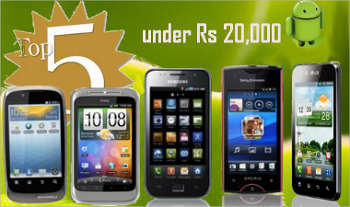
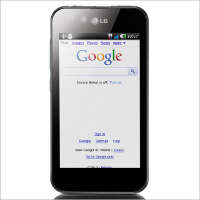 This is the best Android phone in the Rs 20,000 bracket, and we said so last month as well.
This is the best Android phone in the Rs 20,000 bracket, and we said so last month as well.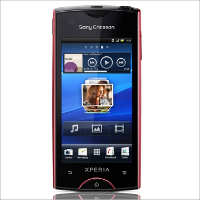 Sony Ericsson Xperia Ray (Rs 18,500)
Sony Ericsson Xperia Ray (Rs 18,500)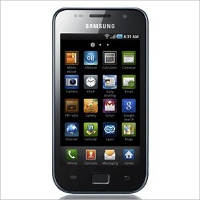 Samsung Galaxy S I9003 (Rs17,500)
Samsung Galaxy S I9003 (Rs17,500)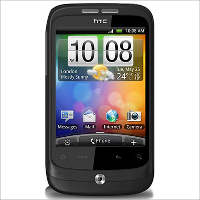 HTC Wildfire S (Rs 13,500)
HTC Wildfire S (Rs 13,500)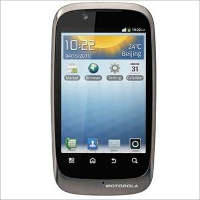 Motorola Fire XT (Rs 12,465)
Motorola Fire XT (Rs 12,465)


 In addition to the external changes, the F3 has picked up a new, 16.1-megapixel APS-C sensor that one-ups the C3's max 12,800 ISO with 16,000 ISO capabilities. It can take 1920 x 1080 videos at 60fps interlaced or 24fps progressive, whereas the C3 can only shoot in 720p. Unlike the C3, the new NEX is compatible with Sony's OLED external viewfinder attachment, and comes with a 1.5-amp USB charger instead of a separate external battery charger (now sold separately). Unfortunately, the camera is unusable while it's juicing up, but because it's got the same cell as the C3, you can still use your old charger if you decide to upgrade. And, Sony claims that the F3 is much more efficient with electricity -- it can get 470 shots per charge, up from 400 in the C3.
In addition to the external changes, the F3 has picked up a new, 16.1-megapixel APS-C sensor that one-ups the C3's max 12,800 ISO with 16,000 ISO capabilities. It can take 1920 x 1080 videos at 60fps interlaced or 24fps progressive, whereas the C3 can only shoot in 720p. Unlike the C3, the new NEX is compatible with Sony's OLED external viewfinder attachment, and comes with a 1.5-amp USB charger instead of a separate external battery charger (now sold separately). Unfortunately, the camera is unusable while it's juicing up, but because it's got the same cell as the C3, you can still use your old charger if you decide to upgrade. And, Sony claims that the F3 is much more efficient with electricity -- it can get 470 shots per charge, up from 400 in the C3.





